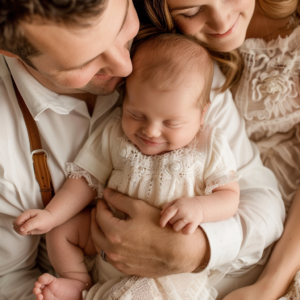The delicate features and soft skin of a newborn are a photographer’s dream subject. But capturing these precious moments requires the right lighting to create beautiful and timeless photographs. Two main options dominate the newborn photography scene: natural light and studio light. Let’s explore the pros and cons of each to help you decide which is best for your session.
Natural Light: A Soft and Dreamy Touch
Natural light offers a soft, diffused glow that creates a natural and ethereal aesthetic. Here’s what you need to know about natural light photography:
Pros:
- Beautiful, flattering light: Natural light creates a soft and forgiving light, ideal for capturing the delicate features of a newborn.
- Authentic atmosphere: Natural light preserves the natural ambiance of the environment, fostering a more relaxed and intimate feel.
- Cost-effective: You don’t need expensive studio equipment, making it a budget-friendly option.
Cons:
- Unpredictable: Natural light is dependent on weather conditions and time of day. Cloudy days can lead to flat lighting, while harsh midday sun creates unwanted shadows.
- Limited control: You have less control over the intensity and direction of light, requiring careful positioning of the baby and photographer.
- Space limitations: Natural light photography usually takes place indoors near windows, limiting your background options.
Studio Light: Consistent Control and Creative Freedom
Studio lighting offers photographers complete control over the lighting environment, allowing for more creative freedom.
Pros:
- Consistent results: Studio lights provide consistent lighting regardless of the weather or time of day, ensuring predictable results.
- Creative control: Photographers can manipulate the light to achieve specific effects, such as dramatic shadows or soft highlights.
- Versatile backgrounds: Studio setups allow for a wider variety of backdrops, offering more creative possibilities.
Cons:
- Equipment cost: Studio lighting requires an investment in equipment and can be expensive for a one-time session.
- Learning curve: Using studio lights effectively requires knowledge and experience to achieve desired effects.
- Potential for harshness: Improper use of studio lights can create harsh shadows and an unnatural look.
So, Which Lighting is Right for You?
The best choice depends on your priorities and preferences. Here’s a quick guide:
- Natural light: Ideal for photographers who prefer a soft and natural aesthetic and are comfortable with the limitations of natural light.
- Studio light: Perfect for photographers seeking consistent results, creative control, and a wider variety of background options.
Finding the Perfect Balance:
Some photographers incorporate both natural and studio light to achieve the best of both worlds. This hybrid approach can create a beautifully balanced look with the softness of natural light complemented by the control offered by studio lights.
Ultimately, the most important factor is choosing a photographer who is experienced and comfortable with the chosen lighting setup. Discuss your vision with the photographer beforehand and let them recommend the lighting approach that best suits your desired outcome.



